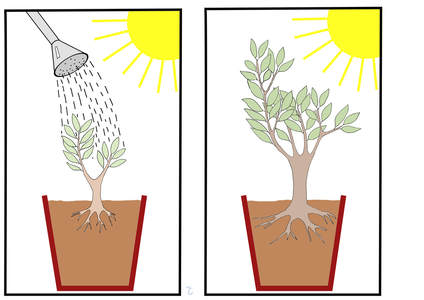|
A long time ago in a college biology lab far, far away…a fellow student and I performed an experiment to assess how different foodstuffs were handled by the intestine. We were not studying anything new, we were just repeating a classic experiment to examine the effect of the composition of food on the speed of digestion. So we took a few groups of rats and fed them a high-carbohydrate diet or a high-fat diet. We determined how much food the rats had consumed, and we euthanized the rats at different times after ingesting the meal and measured the weight of the contents of the stomach and intestine. We found that the food mostly made up of carbohydrate emptied quickly from the stomach, and there was a small amount of it present in the intestine. However, the food made up of mostly fat emptied slowly from the stomach, but there was more of it in the intestine; so far so good. One of our conclusions was obvious from the results, the fatty food emptied more slowly from the stomach. But in our report on the experiment we went beyond that, and also concluded that the food made up of carbohydrate was absorbed faster into the body compared to the food made up of fat. Later we were furious to find out that our experiment report received the equivalent of a “C”! When we confronted (literally) our professor, he explained that we could not make that conclusion because we had not performed an experiment specifically designed to evaluate the absorption of the food into the body. We were incredulous at this reply. “Where else could it have gone?” we enquired. The professor explained that no matter how obvious, we could not make this claim without presenting evidence. He said that, for example, we could have measured the level of certain fats and carbohydrates in the blood vessels draining the intestines and correlated that with the amount of such nutrients inside the intestine. But absent that evidence, we had made an unwarranted conclusion. Needless to say, we were not too happy with our grade. We had worked really hard to conduct the experiment staying late in the lab preparing the diets and making all the measurements. We grudgingly accepted the professor’s argument, but still we could not shake off the idea that, at heart, the whole notion was just a stupid formalism. After all, ingested food doesn’t just disappear; it has to go somewhere. If it is not in the intestine, where else could it have possibly gone but inside the body? At the time we did not appreciate that the requirement for evidence that the professor was imposing on us, despite repeating a well-known scientific experiment and working with a well-known animal model, was meant to alert us to be cautious when performing experiments for the first time with less known systems. In fact, if we had paid attention during high school, we would have remembered a famous example of one such experiment that reached an erroneous conclusion for not following the cautious approach required by our professor.  In 1662 the chemist Jan Baptist van Helmont conducted what is considered the first quantitative experiment in biology. He took a pot and filled it with 200 pounds of soil, which he had weighed after drying it in a furnace, and planted a willow tree sapling weighing 5 pounds in the pot. For 5 years he watered the tree, and at the end of this time period the tree weighed 169 pounds. Yet when he reweighed the soil after drying it as described above, he only found a 2 ounce difference. This indicated that the entire 164 pounds of the mass of the tree could not have possibly come from the soil. Helmont concluded that the 164 pounds of wood, bark, and roots arose from water. This conclusion at the time (1662) must have made sense. After all, from where else could all that extra mass have possibly originated? The only thing the tree seemingly received was water, thus the difference in weight could only have come from the water, right? Notice that van Helmont did not produce any evidence to support this conclusion. Much in the same way that we concluded (without evidence) that the food was absorbed because it could not have gone anywhere else, van Helmont concluded that the extra tree mass came from the water presumably because it could not come from anywhere else. It would be 100 more years before the work of several scientists including Joseph Priestley, Jan Ingenhousz, Jean Senebier, and Nicolas-Theodore de Saussure would establish that plants take up CO2 from the atmosphere and produce oxygen under the influence of sunlight, and that the gain in weight as a plant grows is not just due to accumulation of water or its conversion into tree material, but to the fixation of CO2 into chemical compounds which make up the solid constituents of the wood, bark, and roots. Ironically, van Helmont was the first to identify a gas produced from burning plants which he called “sylvestre”, and which we now know to be CO2, but he never made the connection that plants may take up this substance from the air. So yes, my dear old professor, you were right. Even the obvious must be supported by evidence! Image of the van Helmont experiment by Lars Ebbersmeyer used here under an Attribution-Share Alike 4.0 International (CC BY-SA 4.0) license.
0 Comments
Your comment will be posted after it is approved.
Leave a Reply. |
Details
Categories
All
Archives
June 2024
|
 RSS Feed
RSS Feed